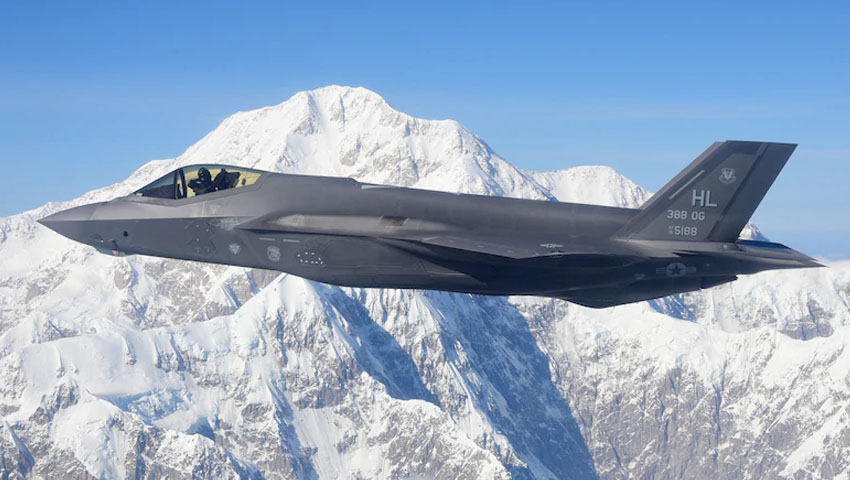The US Air Force’s 388th Fighter Wing’s 4th Fighter Squadron, along with Reservists from the 419th Fighter Wing, returned to Hill Air Force Base on 22 August after three weeks of training in Alaska, including Red Flag 20-3 at Eielson Air Force Base.
To continue reading the rest of this article, please log in.
Create free account to get unlimited news articles and more!
Red Flag is a large force combat exercise that takes place several times each year at both Eielson AFB and Nellis AFB, Nevada, where a friendly “Blue Force” takes on an enemy “Red Force” over several days in a variety of taxing, combat-realistic scenarios.
Red Flag was originally designed after the Vietnam War to provide younger pilots experience before heading into combat. It still does, but it also provides a validation of an entire squadron’s readiness – from pilots, to maintainers, intelligence and other support personnel.
During this exercise, the 4th FS integrated with F-35A Lightning IIs from Eielson AFB and F-22 Raptors from Joint Base Elmendorf-Richardson, Alaska; B-1B Lancers from Ellsworth AFB, South Dakota; KC-135 Stratotankers from Fairchild AFB, Washington; and special operations forces on the ground.
This was the first all fifth-generation fighter force at Red Flag, and included scenarios that focused on “Day One of the war,” said Captain Christian Lindenberg, F-35 pilot and the 4th FS project officer for Red Flag.
Preparing and deploying in the middle of the COVID-19 pandemic, and executing at a high level, was a testament to the adaptability and resilience of the entire squadron and aircraft maintenance unit, said Lieutenant Colonel Joshua Arki, 4th Fighter Squadron commander.
“This was the first time the F-35 participated in Red Flag Alaska. Our jets and integrated operations and maintenance team performed phenomenally. Coupled with our joint team – consisting of the F-22 Raptor, command and control elements, and special operations forces on the ground – the enemy did not stand a chance in the training scenarios. We expect the same outcome if called upon to execute this mission in combat,” he explained.
The squadron generated and flew up to 16 sorties each training day during the exercise, but flying is just half the battle for young pilots at Red Flag. The real test often comes in mission planning and debriefing.
A typical mission-planning day starts at 5am and lasts for approximately 12 hours.
The day of the mission starts with another pre-dawn brief from the mission commander and flight leads, and then it’s time to go “kick down the door” with a mass of joint air power, Capt Lindenberg said. After the mission is complete, the most critical training element for pilots begins – reviewing and deconstructing the mission.
First Lieutenant Alex Best graduated the F-35 basic pilot training course in June and joined 4th FS. Six weeks later he was flying with a large, integrated force in the Air Force’s premier combat exercise.
"It was a little overwhelming, just the sheer number of aircraft and the size of the training range is amazing. I am confident in the F-35’s capabilities. But, the bigger takeaway for me was the caliber of all the Airmen I’m flying with. That’s what makes me confident we can win any fight. Their skill and preparation is unmatched and a large exercise like this really highlights that experience," 1st Lt Best explained.
Stephen Kuper
Steve has an extensive career across government, defence industry and advocacy, having previously worked for cabinet ministers at both Federal and State levels.

 Login
Login








